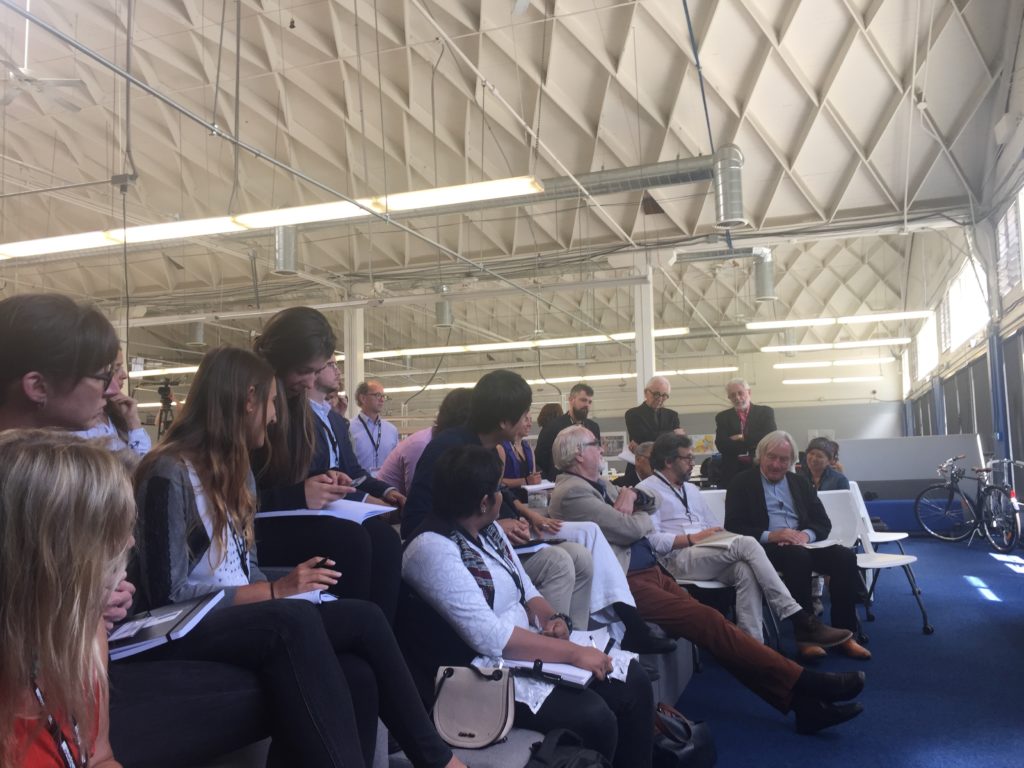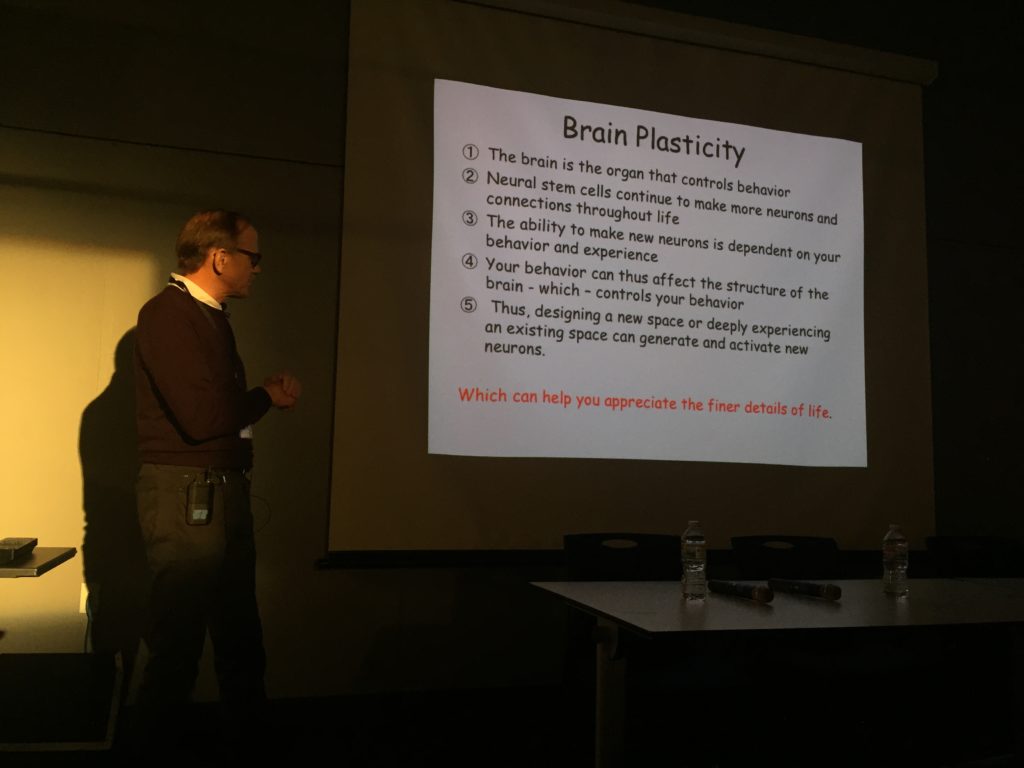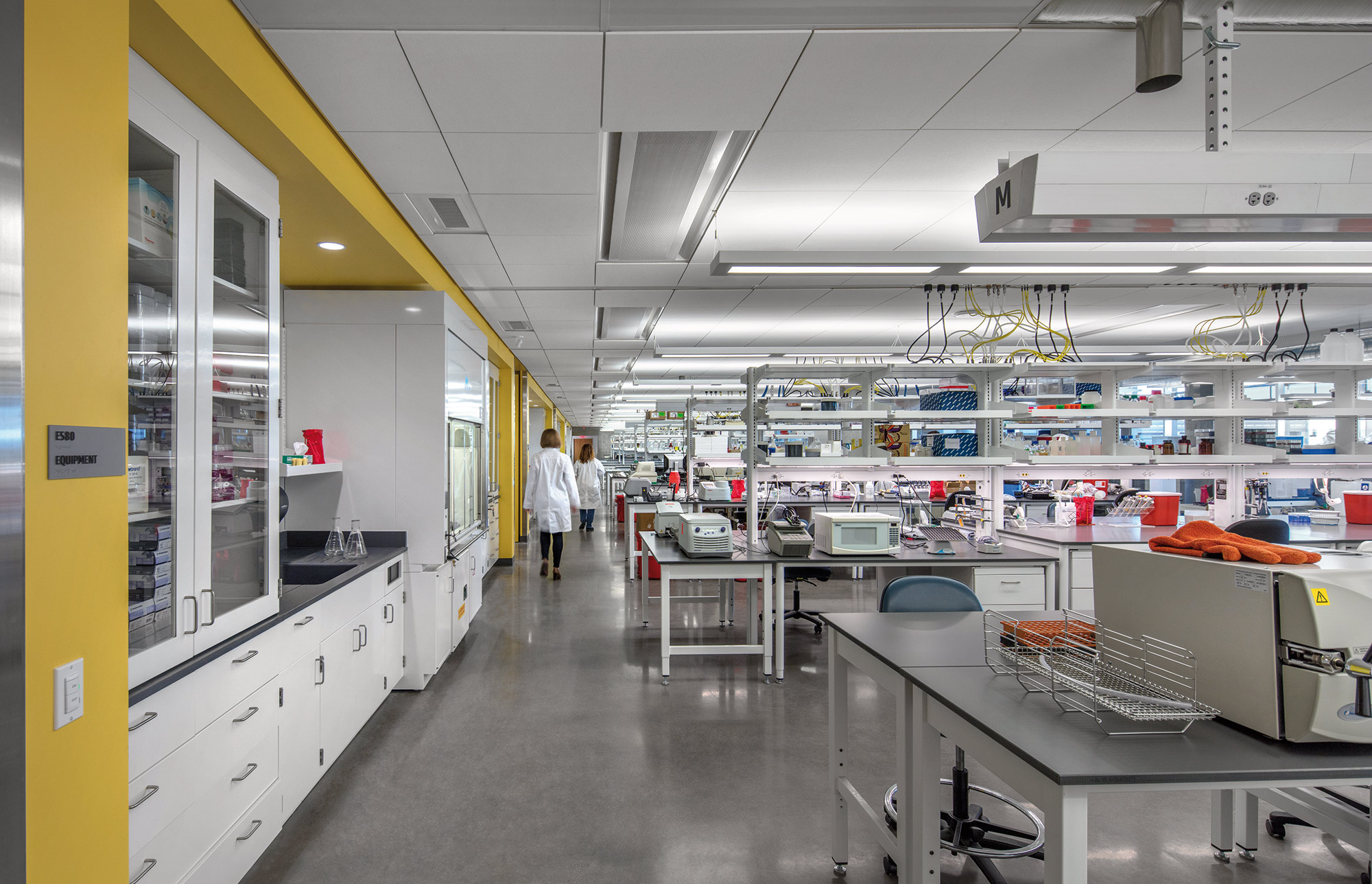Neuroscience for Architecture: Looking Back and Moving Forward

By Fallon Lebedowicz
This past summer I attended a four-day executive course and certificate program entitled “Neuroscience for Architecture” at the NewSchool of Architecture and Design in downtown San Diego. The program was created for working professionals as a collaborative venture with the Academy of Neuroscience for Architecture (ANFA).
Around 35 people from around the globe attended the workshop. Attendees came from as far as Russia, South Africa and Brazil – to put this in perspective, I was one of the two people at the conference from California. However, I did see familiar faces I recognized from participating in ANFA’s 2016 conference (Connection: Bridgesynapes at the Salk Institute), as a few fellow presenters also attended this workshop.
The days consisted of lectures followed by studio sessions, panel discussions and a quick trip to the Salk Institute. Notable neuroscientists participated, including Fred Gage, Thomas Albright, Sergei Gepshtein, and Eduardo Macagno, as well as prominent architects Juhani Pallasmaa and Steven Holl.

As expected, the topics discussed were both complex and polarizing. I suppose that’s what happens when you put architects and scientists in the same room. Topics included, but were not limited to, neuroplasticity and neurogenesis, haptic perception, psychophysics, environment and gene expression, reductive design, etc.
To attend a workshop with such a diverse group of people sharing the same passion for science and design was invaluable to say the least. The relationship between neuroscience and architecture is a relatively new concept, and while not without its own complex challenges, it has enormous potential. The fact that this workshop had participants from around the world proves that the relationship of neuroscience and architecture is not just a local construct, but a growing global demand.

